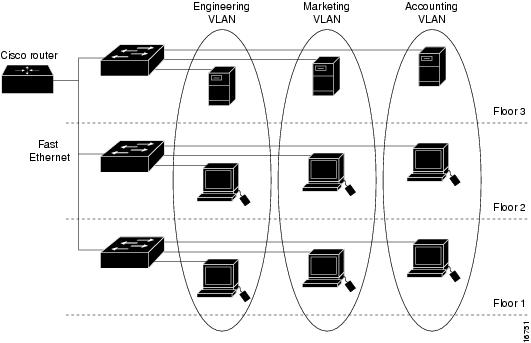In short, no, this is not possible. UCNET (the communication protocol that these applications use) is not designed as a routable protocol and thus is not routable across different networks, be they physically distinct, or logically distinct, as in the case of VLANs. All UCNET devices must be on the same logical network and IP Subnet to function correctly.
The more detailed answer is that even if it might be technically possible somehow, it is not a supported configuration or use case.
VLANs are logical networks defined across multiple segments of a single physical network.

"VLANs define broadcast domains in a Layer 2 network. A broadcast domain is the set of all devices that will receive broadcast frames originating from any device within the set. Broadcast domains are typically bounded by routers because routers do not forward broadcast frames. Layer 2 switches create broadcast domains based on the configuration of the switch. Switches are multiport bridges that allow you to create multiple broadcast domains. Each broadcast domain is like a distinct virtual bridge within a switch.
You can define one or many virtual bridges within a switch. Each virtual bridge you create in the switch defines a new broadcast domain (VLAN). Traffic cannot pass directly to another VLAN (between broadcast domains) within the switch or between two switches. To interconnect two different VLANs, you must use routers or Layer 3 switches.
VLANs are often associated with IP subnetworks. For example, all of the end stations in a particular IP subnet belong to the same VLAN. Traffic between VLANs must be routed."